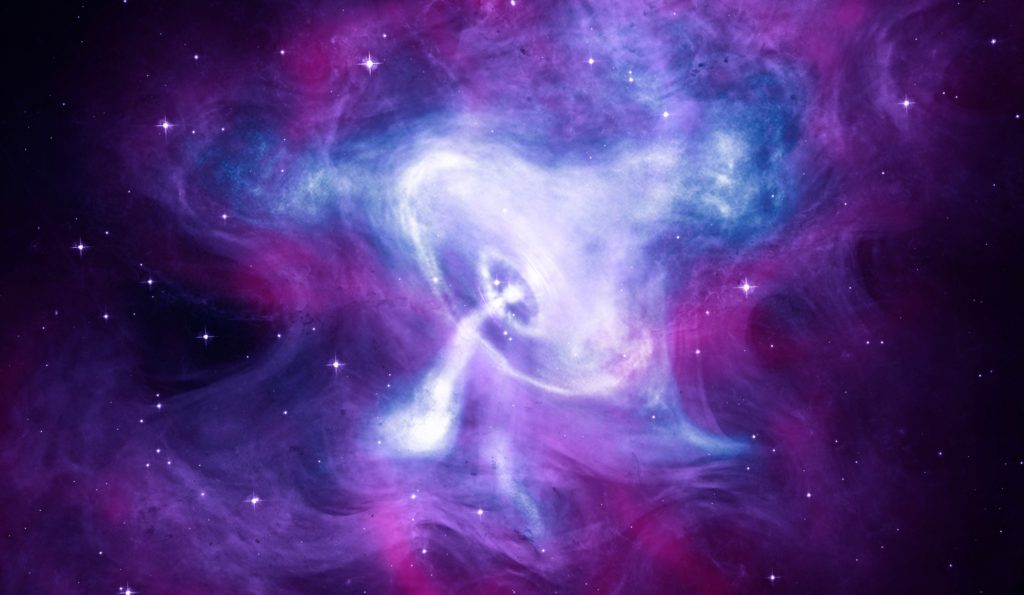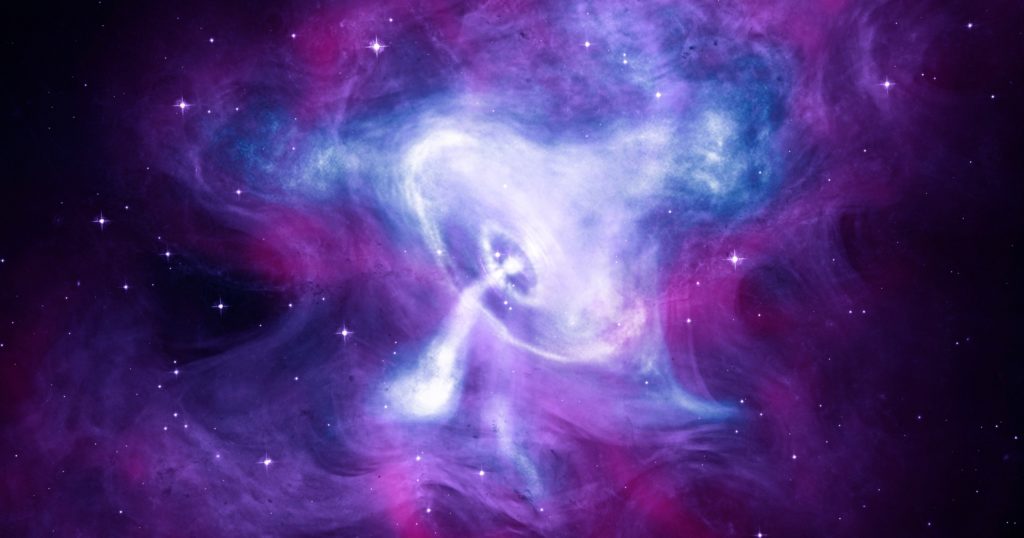 Physics, Earth & Space
Physics, Earth & Space
Recommended Reading: A Handbook of the Big Bang


It would be easy to miss the new book on cosmology by Luke Barnes and Geraint Lewis in a bookstore. One could easily mistake the raised fist artwork on the cover for an indicator of Marxist content. The book’s title, The Cosmic Revolutionary’s Handbook, is not helpful either. Perhaps the publisher, Cambridge University Press, thought this might help sales with the younger hip generation.
Readers of Evolution News probably know this duo from their prior collaborative project, A Fortunate Universe: Life in a Finely Tuned Cosmos. I suggest it whenever I’m asked about the best introductory and up-to-date book on cosmological fine-tuning. Their new book is on the big bang theory and nicely complements the previous work. Both A Fortunate Universe and Handbook would serve as helpful background for those interested in reading Stephen Meyer’s next book, The Return of the God Hypothesis.
Handbook is a modest 278 pages in length. It has several helpful black-and-white images, drawings, and illustrations. There are only a few simple equations. Anyone with a high school education will understand the main points.
A Paper by Michael Keas
Barnes and Lewis succinctly explain the title of their new book in the first line. They say, “We want to teach you how to overthrow a scientific theory.” In other words, they’ve written a handbook for people who don’t agree with the current consensus on cosmology and want to overthrow it. In truth, anyone interested in cosmology, skeptic or not, will get much from their book. They begin by discussing what makes for a good scientific model, relying heavily on a recent paper by our own Mike Keas on the topic.
They go on to suggest several practical steps to getting your cosmological ideas published. They warn potential revolutionaries that “your glorious 400-page unsolicited Word document, with seven different fonts, Microsoft Paint diagrams, and ALL CAPS, is headed straight for the trash.” You really do need to go through the tedious process of submitting to a scientific journal and multiple rounds of review and revision before cosmologists will pay any attention to you.
You Say You Want a Revolution
In their section, “Does Science Want a Revolution?” the authors argue that journal editors and scientists want to encourage and publish new ideas, and that “you don’t get new grant money for doing old science.” This is one of the very few parts of the book that I disagree with. While I would agree with their statements here in the general sense, there are some areas of science where these rules don’t apply. I’m thinking of scientists critical of the old science of Darwinism, pro-ID scientists, and scientists skeptical of anthropogenic global warming alarmism. The censorship (and even punishment) of scientists holding to these positions shows that the journal review and publication process is broken in these areas. I do agree that the field of cosmology does not suffer from this malady, as evidenced, for example, by the publication of minority view theories like Modified Newtonian Dynamics (MOND).
Several chapters read like condensed versions of chapters you would find in an introductory college astronomy textbook. But I think Barnes and Lewis do a better job. For example, in Chapter 2, “How Dark Is the Night?” the authors treat the reader to a refreshingly accurate, if brief, overview of the history of astronomy. They quickly dispatch the “dark ages” and “Copernican dethronement” modern historical myths. They also give a more in-depth discussion of Olber’s Paradox (“Why is the night sky dark?”) than do most introductory textbooks. Olber’s Paradox was the first evidence supportive of the big bang theory (before the theory was even proposed).
Meat and Veggies
After setting the table in the first two chapters Barnes and Lewis begin serving the meat and veggies. They introduce Hubble’s Law (or, better yet, the Hubble-Lemaître Law), which describes how galaxy redshift depends on distance. They don’t shy from covering controversies. They write about Halton Arp’s catalog of quasars with anomalous redshifts, in which high-redshift quasars appear to be associated with low-redshift galaxies. Even if this association were true (highly doubtful), it has no bearing on Hubble’s Law, which is based on galaxy redshifts.
In the next chapters they cover a few important observational confirmations of the big bang theory usually not included in introductory treatments due to their technical nature. One is the time dilation of supernova light curves. This effect causes the light curves of high redshift (more distant) supernovae to change more slowly than those of low redshift supernovae. This is a simple test of the big bang theory, as it only depends on the amount of expansion since the light left the supernova (and that only depends on its redshift). The Tolman-Sandage test provides a less simple test. It relates the surface brightness of an elliptical galaxy to its redshift. While it also confirms the big bang theory, it depends on knowing several corrections which add uncertainty to the final results (a fact the authors readily admit). In a cleverly titled section, “A Rival Falls: Putting Tired Light to Bed,” we learn how an early attempt to explain the Hubble- Lemaître Law, tired light, fails both these tests.
The Most Important Confirmation
Next, Barnes and Lewis discuss what has come to be seen as the most important big bang confirmation, the cosmic microwave background (CMB) radiation. For background on the history of the CMB radiation measurements see here. They make the important points that the CMB follows very precisely the spectrum of an ideal blackbody thermal emitter and that its radiation is coming to us from all directions. A blackbody spectrum is produced when matter and light are in thermal equilibrium and have the same temperature. However, the temperature of the CMB is 2.725 degrees K. There is no matter today that can be the source of this radiation. The big bang provides the answer: the CMB is the hugely redshifted radiation from a time long ago, when the universe was much hotter and denser, when matter and radiation were strongly coupled.
They also describe a rarely noted confirmation, the evolution of the CMB temperature with redshift. As the universe ages, the original CMB radiation becomes ever more redshifted and cooler. This means that if we can measure the CMB in the distant universe (at large observed redshifts), we should see a higher temperature. This is precisely what is observed (equal to the predicted slope), using two different kinds of measurements. Barnes and Lewis cover other observational confirmations of the big bang theory including the quasar Lyman alpha forest and the abundances of the light elements. But, I won’t discuss these here. I’ll leave something for the reader!
Out of Left Field
In their chapter, “Balls from Left Field,” Barnes and Lewis describe and criticize several challenges to standard big bang cosmology including Humphreys’s white hole cosmology, redshift quantization, and the linear universe model. I think they do a good job here.
It is only near the end of the book that the reader finally gets to learn about dark matter and dark energy. They admit that cosmologists are not happy with their ignorance of the nature of the “dark sector.” Is this why they deferred the discussion? No. Here’s how they put it (on page 226): “The big bang’s predictions discussed so far do not depend on whether there is dark matter and dark energy in the universe or not.” Remember, the big bang merely posits that the universe has been expanding and cooling over its history from a much denser and hotter state.
On the question that is undoubtedly at the front of the reader’s mind, “So, was there a beginning?”, Barnes and Lewis are noncommittal. They admit that a big bang model based on general relativity (and no quantum effects) has a beginning. As they put it, “Many of our clues point to a beginning, but not all, and none decisively.” (page 254) I was hoping for a knock down drag out fight between Barnes (a Christian) and Lewis (an atheist) like they had in A Fortunate Universe. Well, maybe it was more cordial than I recall. Barnes could have mounted a powerful defense of a beginning to the material universe.
The Beginning of Things
There is nothing in the basic big bang theory, by itself, that speaks to the origin of the universe. But, it does strongly imply a beginning. And, although it is beyond the scope of their book, the Second Law of Thermodynamics combined with the observation that the early universe was in a very low entropy state imply that it could not have existed from eternity past. It corroborates the big bang evidence for a beginning. For readers left wondering about a cosmic beginning, I recommend reading Bill Craig’s chapter, “Creation Ex Nihilo: Theology and Science,” in The Story of the Cosmos: How the Heavens Declare the Glory of God.
Craig explains how the Borde-Guth-Vilenkin theorem implies a beginning for the classical spacetime of general relativity and why a quantum gravity theory would not alter the need for a beginning. Craig’s chapter can serve as the “missing chapter” in Handbook that answers this chief question of questions.
There is another missing chapter in Handbook, one that would cover the recent “crisis in cosmology.” (See here.) It became increasingly obvious that a crisis exists in April 2018 and through 2019. Perhaps Barnes and Lewis had a deadline to get the book manuscript completed by 2018. So, I’ll give them a pass, but I do expect them to cover it in their second edition!
Overall, I would recommend Handbook for anyone who would like to learn about modern cosmology and who is open to learning why cosmologists are so convinced the evidence supports the big bang theory.
Image: Crab Nebula, by NASA/CXC/SAO; Optical: NASA/STScI; Infrared: NASA-JPL-Caltech.
